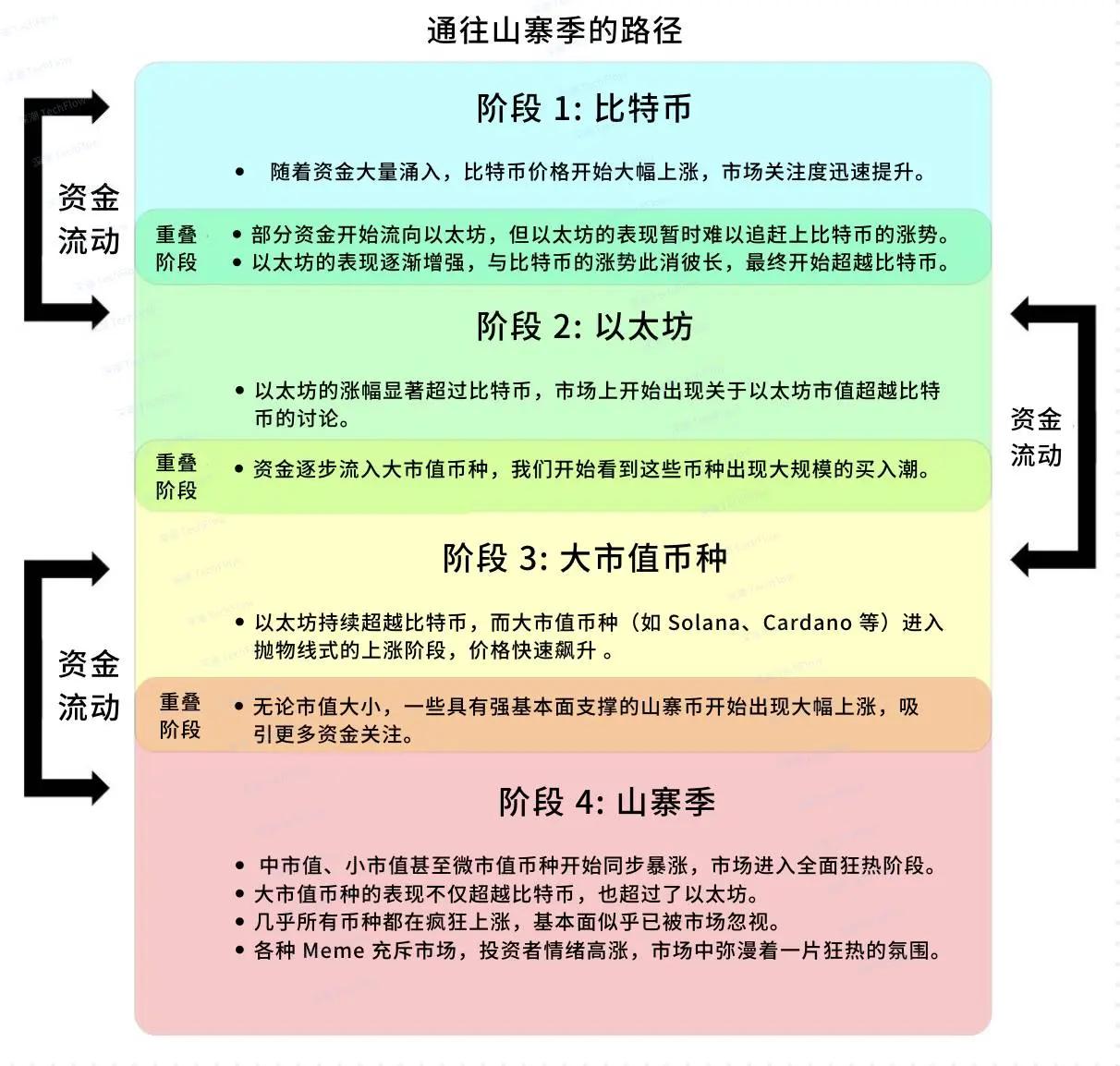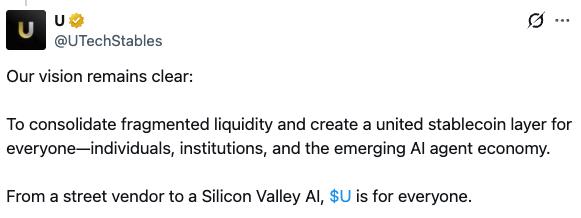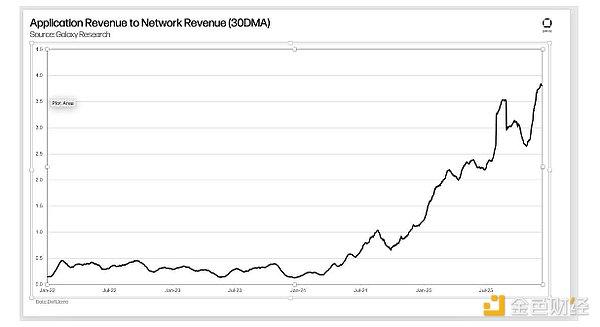Author:Miles Deutscher
Source: Miles Deutscher X account
Compiled by: TechFlow
The 4-year cycle has come to an end. We are entering a new paradigm in the Altcoin market - survival of the fittest, elimination of the unfit.
Here is my strategy for navigating the market changes in 2025 to continue building wealth in this uncharted territory.
Before sharing my strategy, let's first explore why the 4-year cycle has become a thing of the past.
I believe there are two main reasons why the 4-year cycle is no longer applicable.
Diminishing Halving Effect
First, from the supply side, the Bitcoin ($BTC) halving effect is gradually weakening.
With each halving, the reduction in new Bitcoin issuance is becoming smaller.

For example, the halvings in 2012 and 2016 reduced issuance by 50% and 25% respectively, resulting in a significant impact on market prices.
But by 2024, the reduction in issuance from the halving will only be 6.25%. This means the price-driving effect of the halving has diminished significantly.
ETFs Have Changed the Market Rules
Secondly, from the demand side, the launch of Bitcoin ETFs has been a game-changer, permanently altering the market dynamics.
Bitcoin ETFs are financial instruments that allow traditional market investors to gain indirect exposure to Bitcoin.
Since their launch, they have become the most successful ETF products in history, with demand far exceeding expectations.

This influx of demand has not only changed the overall landscape of the Altcoin market, but it has also broken many of the old market rules (such as the 4-year cycle).
The biggest impact of ETFs is actually seen in the Altcoin market. Let me explain in detail.
In the past, you might have often seen a chart showing the price rotation between Bitcoin and Altcoins. This was indeed the case in 2021.
But now, this relationship has broken down.

(Original image from Miles Deutscher, compiled by TechFlow)
The Wealth Effect of Bitcoin Has Disappeared
In 2017 and 2021, when Bitcoin prices were rising, many wealthy Bitcoin whales would transfer their profits to Altcoins on centralized exchanges (CEXs), fueling the Altcoin market boom.
However, now the majority of new money entering the market is through Bitcoin ETFs, and this capital is not flowing into the Altcoin market.
In other words, the flow of capital has fundamentally changed, and Altcoins no longer benefit from the wealth effect of Bitcoin.
Retail Investors Skipping Stages 2 (ETH) and 3 (Mainstream Coins)
Retail investors are now directly flocking to high-risk speculative on-chain projects, the so-called "Pump Fun" games.
Compared to 2021, the number of retail participants in this cycle has clearly decreased. This is mainly due to the macroeconomic pressures, as well as the heavy losses many experienced in the previous cycle from events like LUNA, FTX, BlockFi, and Voyager.
However, the retail players who remain in the market are skipping mainstream coins and going straight to seeking opportunities on-chain.
You can read my detailed analysis on how this phenomenon is impacting the market here.

If my assessment is correct, and the cycle theory is no longer applicable, what changes can we expect in the future market?
I have both bad news and good news to share.
The bad news is: "Lying back and making money" has become more difficult. This is a natural sign of the industry's maturation.
In fact, there are now more trading opportunities in the market, but if you still use the 2021 strategy - holding a bunch of Altcoins and passively waiting for the "Altcoin season" to arrive - you may be disappointed and underperform.
The good news is: Since there is no longer a four-year cycle, it also means that the multi-year bear markets driven by specific cryptocurrency factors will no longer occur. Of course, from a macroeconomic perspective, long-term bear markets are still possible, as cryptocurrencies are no longer isolated and their correlation with the macroeconomy is now stronger than ever.
The market's "risk-on" and "risk-off" periods are more likely to be driven by changes in macroeconomic conditions. These changes will typically trigger short-term mini echo-bubbles, rather than sustained one-way uptrends lasting for months.
These echo-bubbles present abundant opportunities to make money.
For example, in 2024, we witnessed the rotation of different hot topics: November was the meme craze, December was the AI concept, and January was AI agents. Undoubtedly, new trends will emerge in the future.
If you are sharp enough, these are all excellent money-making opportunities, but you will need to adopt a slightly different strategy than in past cycles.
This brings me to the strategy I want to discuss next.
The other day, I had dinner with @gametheorizing, and he made a very insightful point.
Many people are chasing the ultimate goal of 5x, 10x, or even 20x returns on their portfolios.
But a better strategy is to focus on multiple small bets, rather than going all-in. By consistently accumulating a series of small wins, the long-term returns can be even greater.
So instead of going all-in, hoping for an Altcoin season to rapidly multiply your assets, try to build wealth through the power of compounding over time.
Specifically, you can adopt this strategy:
Small bets > Take profits, re-bet > Take profits again, repeat.
This is also why many top traders and thinkers in the crypto space (like Jordi) were former professional poker players. They learned from poker how to approach each trade with a probabilistic mindset, evaluating potential outcomes, rather than just blindly placing bets.
My current portfolio allocation is as follows:
50% invested in high-conviction assets I'm bullish on long-term, 50% in stablecoins and active trading. I'll use this portion to seek short-term opportunities in the market, moving in and out flexibly.
Additionally, I use stablecoins as the benchmark to measure the success of my trades. Each time I exit a trade, I convert the profits back to stablecoins, allowing me to clearly see my gains.
If your cryptocurrency portfolio is too diversified, and you're unsure how to navigate the current market changes, last week I shared a guide on how to optimize your portfolio based on the market shifts.
In that article, I emphasized the importance of setting an "INVALIDATION" standard for each trade. Just as you need a clear reason to VALIDATE your decision to enter a cryptocurrency trade, you also need a clear standard to INVALIDATE the trade and exit when market conditions no longer align with your expectations.
I've noticed that many people lack basic risk management awareness when entering trades and don't have well-defined exit criteria. This often leads to unnecessary losses.
If you want to take a suggestion that can significantly improve your future profitability, it is: Develop clear technical or fundamental "invalidation" criteria for each trade. This not only helps you better manage risk, but also improves the overall efficiency of your trading.
Of course, the degree of your confidence in a trade and the expected holding time may affect how you set the "invalidation" criteria or trigger conditions. However, this does not change the fact that you need to plan ahead. Having a clear exit plan is one of the keys to successful trading.
Although the current market may not fully follow the past cyclical patterns, I remain confident about the future. As long as you maintain the right mindset and strategy, there is still the prospect of significant growth by 2025.
Currently, we are in a bear market, but the market trend will eventually change and bring many new opportunities. Before that, your top priority is to survive.
The rewards in the Altcoin market often go to those who can persevere through the violent fluctuations. Patience and resilience are the keys to ultimate victory, regardless of how the market ebbs and flows.








